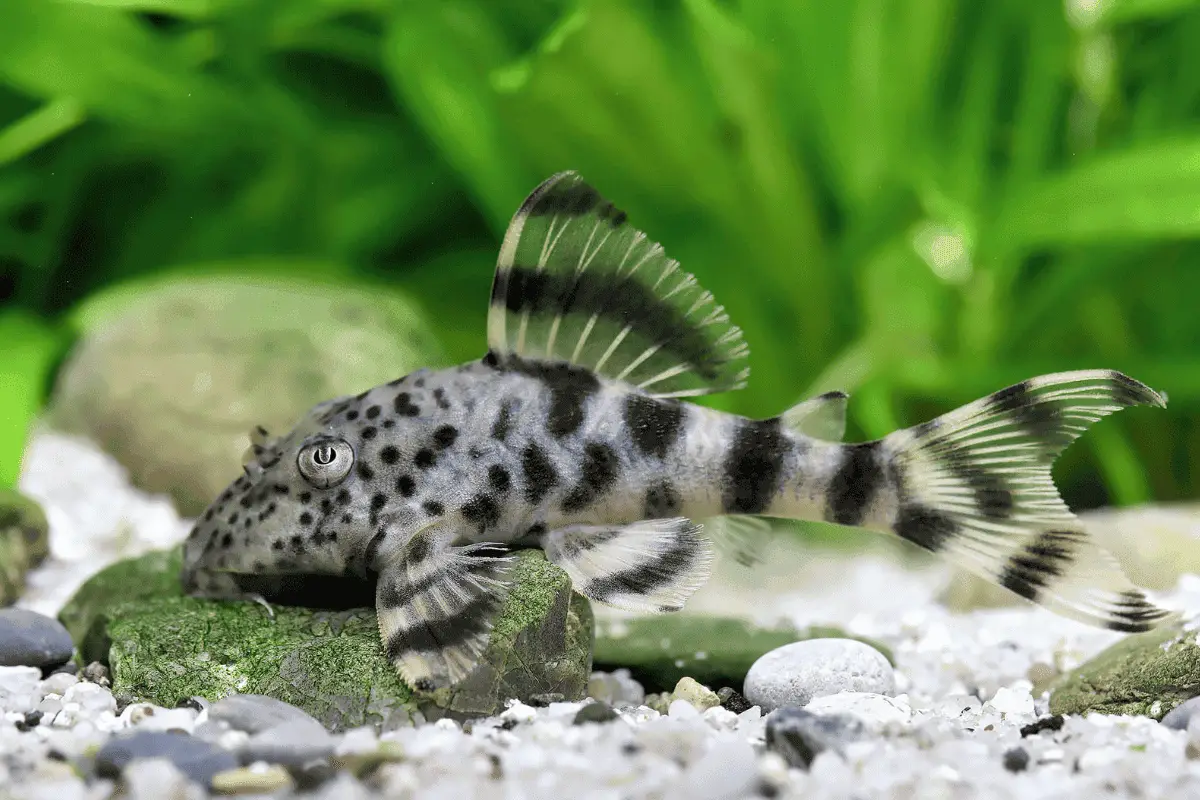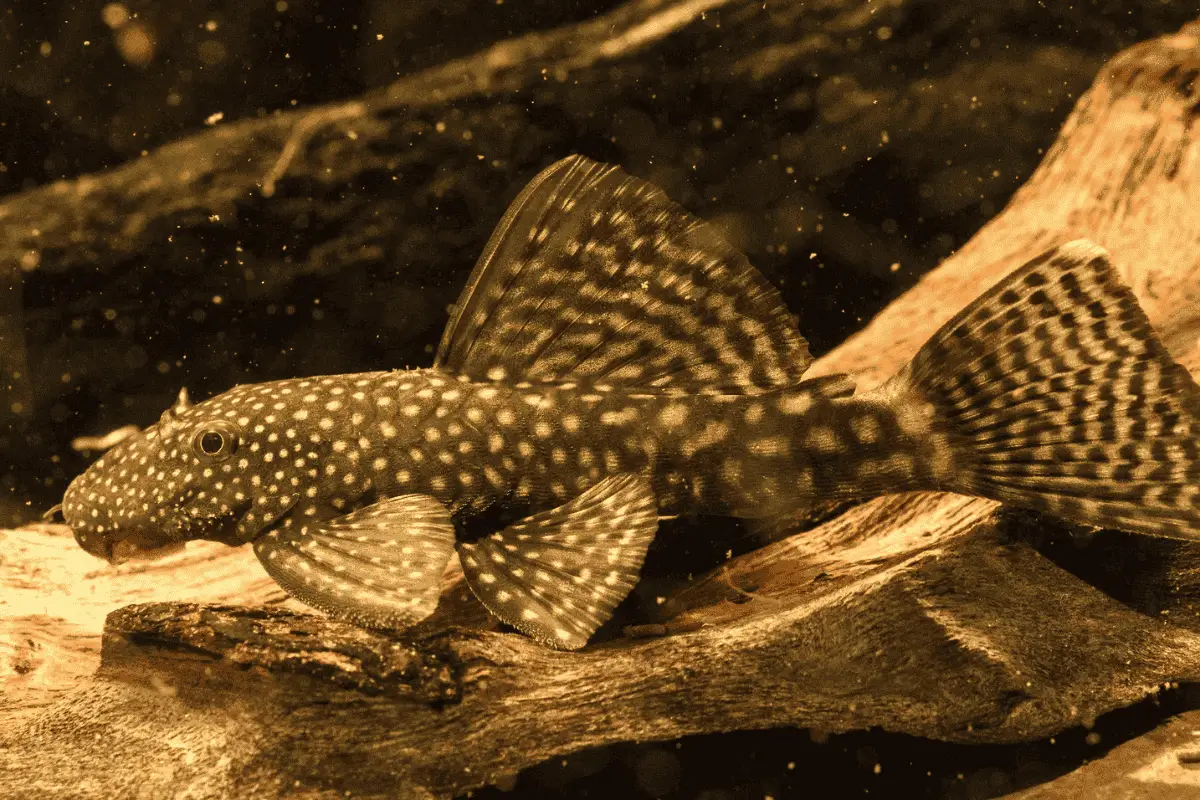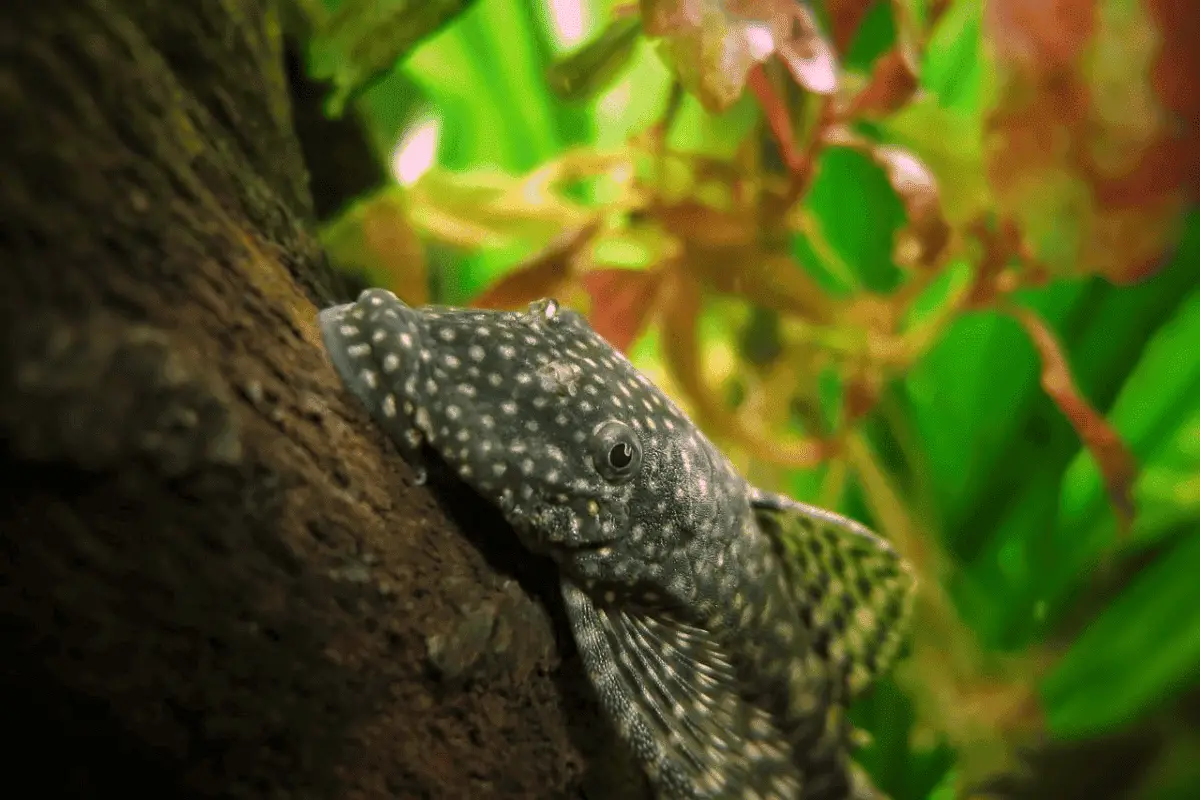Setting up a Pleco fish tank is relatively uncomplicated. Plecos are not high-maintenance creatures.
However, what about the substrate? Does it make a difference if you choose sand or gravel? And how frequently should you clean it?
In this article, I’ll discuss these questions to help you become well-versed in Pleco care. Let’s get started.
Also Read: Pleco Fish Tank Setup

What Is the Best Substrate for Plecos?
When it comes to choosing the ideal substrate for Plecos, two types immediately come to mind:
1. Sand
Sand is arguably the most suitable substrate for Plecos. It is soft on their undersides, and its fine granules allow for easy sifting by these bottom dwellers.
- Natural Behavior: Sand allows Plecos to exhibit their instinctual behavior, like sifting through the substrate to search for food particles.
- Safety: Unlike sharper substrates, sand is smooth, reducing the risk of Plecos injuring their bellies, which they often rest on.
- Waste Management: Sand is compact, making uneaten food and waste more visible on its surface. This makes cleaning easier and ensures Plecos live in a cleaner environment.
- Aesthetics: A sandy substrate can create a natural-looking riverbed environment, which is the natural habitat of many Pleco species.
- Versatility: Many plants, which Plecos sometimes enjoy having in their environment, can root easily in sand.
My recommendation: AquaNatural Sugar White Sand (link to Amazon).

2. Fine Gravel
Fine gravel comes in as a close second for Plecos. Although not as gentle as sand, its rounded and polished nature can still be a comfortable substrate for these fish.
- Stability: Fine gravel provides stability, especially beneficial for anchoring plants and decorations. Plecos, while grazing, won’t easily uproot plants compared to sand.
- Beneficial Bacteria: The gaps between gravel particles can house beneficial bacteria that contribute to a healthier nitrogen cycle in the tank, beneficial for Plecos.
- Easy Maintenance: Gravel doesn’t compact as sand does, so it’s less likely to form anaerobic pockets which can be harmful to Plecos.
- Aesthetic Variety: Fine gravel comes in various colors and sizes, allowing for diverse looks which can complement the natural colors of Plecos.
- Natural Feel: Many riverbeds, where Plecos originate from, consist of a mixture of sand and gravel, so a fine gravel substrate can still offer them a sense of familiarity.
My recommendation: AquaNatural Gold Pearl Gravel Substrate (link to Amazon).

Is Sand or Gravel Better for Plecos?
Sand is generally preferable for Plecos as it allows them to sift and exhibit their natural behaviors.
While gravel has its merits, such as providing spaces for beneficial bacteria, sand closely mimics Plecos’ natural riverbed habitat.
Therefore, for a more natural and behavior-friendly substrate, sand is the better choice for Plecos.
Factors to Assess When Picking a Substrate for Plecos
Choosing the right substrate for Plecos means focusing on their well-being, safety, and instinctual habits.
Think about the substrate’s feel, how easy it is to maintain, and its fit with other tank components.
- Texture and Comfort: The undersides of Plecos are tender. A gentle substrate like sand guarantees their safety while they’re at the tank bottom.
- Maintenance Level: Some substrates might hold in debris, impacting the water’s purity. For Plecos, a substrate that’s simple to clean is critical.
- Tank Mates: Depending on the other tank residents, the substrate should be suitable for all, ensuring peaceful coexistence with Plecos.
- Beneficial Bacteria: A substrate promoting healthy bacterial growth will help digest waste, resulting in a cleaner space for Plecos.
- Aesthetic Preferences: Though the Plecos’ health is key, also think about how the substrate adds to the tank’s overall aesthetics.
- Plant and Decor Anchoring: If adding plants or ornaments is in the plan, substrates like thin gravel might offer better anchorage, preventing Plecos from disrupting them.
- Budget: Premium substrates might cost more, but getting the best one guarantees a safe and cozy habitat for Plecos.
Other Substrate Options for Plecos
Beyond sand and gravel, here are additional selections:
1. Large River Rocks
These rocks can mimic the rock-laden riverbeds some Plecos inhabit. Their even textures create a somewhat secure zone for Plecos to roam and relax.
- Natural Aesthetic: Large river rocks lend an authentic riverbed feel, resonating with the natural settings of certain Pleco varieties.
- Stable Environment: These rocks are immovable, offering a solid base and preventing Plecos from shifting them, ensuring a stable tank arrangement.
- Crevice Exploration: The spaces between these rocks can be exciting exploration and hideaway spots, replicating a behavior Plecos love.
My recommendation: YISZM Natural River Rocks (link to Amazon).

2. Slate Tiles
Slate tiles offer a unique substrate choice for Plecos. They are smooth and create a uniform look, giving Plecos a clean and even surface to glide over.
- Easy Maintenance: With slate tiles, debris is easily visible, allowing for quick cleaning and ensuring Plecos live in a pristine environment.
- Durability: Slate is resistant to wear and tear, providing a long-lasting option that can endure the activities of Plecos for years.
- Consistent Look: For aquarists who prefer a neat, organized substrate, slate tiles offer a tidy appearance.
My recommendation: Natural Slate Stone 3 to 5 inch Rocks (link to Amazon).

3. Driftwood-Covered Bottom
My recommendation: WDEFUN Natural Large Driftwood (link to Amazon).
Using driftwood as a primary substrate component gives Plecos a very natural setting, reminiscent of woody riverbeds.
Driftwood offers both visual appeal and functional benefits for Plecos.
- Natural Enrichment: Driftwood can release tannins, which can mimic the natural waters some Plecos inhabit, and even have beneficial properties for their health.
- Texture and Hideouts: The unique structures of driftwood provide Plecos with ample hiding spots and surfaces to graze on biofilm.
- Organic Feel: A driftwood-covered bottom provides an organic and forested river feel, closely mirroring environments where Plecos might be found in the wild.
Also Read: Do Plecos Need Driftwood?

Can Plecos Live In Bare-Bottom Tanks?
Yes, Plecos can thrive in tanks without substrate. But even though this setup simplifies maintenance, it doesn’t necessarily support Plecos’ natural instincts.
- Easy Cleaning: Without substrate, spotting and removing waste is a breeze, giving Plecos a tidy living space.
- Visibility: The behaviors of Plecos, like feeding or resting, are clearer to see without substrate in the way.
- Safety: There’s zero danger of Plecos swallowing tiny substrate particles, which safeguards their digestion.
- Missing Natural Behavior: No substrate means Plecos can’t sift or forage, which they naturally do, potentially impacting their overall happiness.
- Aesthetic Drawbacks: Tanks without substrate may lack the natural look that substrate brings, which might be less engaging for Plecos.
Also Read: Do Plecos Need Hiding Spots?
What’s the Best Substrate for a Pleco Tank with Plants?
For a tank housing Plecos and plants, blending sand and fine gravel works wonders. This duo offers benefits to both plants and Plecos.
- Root Support: The substrate blend ensures plant roots are firmly anchored, even when Plecos are active.
- Encouraging Natural Behavior: The sand allows Plecos to sift and behave naturally, and they also get the structure of the gravel.
- Home for Good Bacteria: The gaps in the fine gravel can host beneficial bacteria, creating a healthier environment for both plants and Plecos.

Setting the Substrate for Your Pleco Tank
Laying the right substrate foundation is essential for the well-being of your Plecos and the overall aquarium health. Here’s a systematic guide:
- Step 1: Learn about your specific Pleco’s needs to choose the right substrate – sand, gravel, or both.
- Step 2: Get a top-notch substrate from trusted sellers, ensuring no harmful pollutants that might harm the Plecos.
- Step 3: Rinse the substrate well in fresh water, ideally with a sieve, to get rid of fine dust or particles.
- Step 4: Distribute a uniform substrate layer, about 2-3 inches thick, on the tank’s bottom, ensuring depth for both plants and Plecos.
- Step 5: Gradually add water, using a dish to spread the inflow and avoid unsettling the substrate.
- Step 6: Fix decorations, wood, and plants firmly into the substrate for the Plecos’ benefit.
- Step 7: Allow the tank to cycle appropriately before welcoming your Plecos to ensure their safety.
Keeping Your Pleco’s Substrate Spotless
It’s vital to keep the substrate neat for your Plecos’ welfare. Here’s how to keep it in top shape:
- Routine Vacuuming: Employ a gravel vacuum weekly to extract waste and uneaten food, guarding against issues for Plecos. I personally use the Laifoo 7ft Aquarium Siphon (link to Amazon).
- Spot Checks: Act quickly to remove any noticeable debris, so Plecos always enjoy a clean territory.
- Rearrange Decor: Every so often, move around ornaments to ensure you’re not missing hidden dirt.
- Water Refresh: Regularly replace 20-30% of the tank water.
- Check Water Stats: Consistently monitor factors like pH and ammonia. Balanced water metrics help sustain a substrate that’s friendly to Pleco health.

Do Plecos Eat Algae from Gravel?
Yes, Plecos do feed on algae, often found on gravel surfaces. But remember, they shouldn’t solely depend on the tank’s natural algae.
- Natural Instinct: Wild Plecos frequently feed on algae and biofilm on submerged areas like river bottoms – a habit they keep in captivity.
- Dietary Differences: Pleco species vary in taste. While many love algae, some might be meat-lovers and less keen on algae.
- Balanced Feeding: Even if Plecos snack on algae from gravel, ensure they get a mixed diet with pellets and veggies for complete nutrition.
How Regularly Should a Pleco Tank Floor Be Cleaned?
For your Plecos’ best health, aim to clean the tank floor weekly. This helps keep the substrate free of excess waste and leftover food.
- Debris Concerns: Mature Plecos can be quite messy. Cleaning each week avoids toxic build-ups of waste.
- Clear View: Regular tidying lets you easily watch over your Plecos’ health and actions, without waste getting in the way.
- Healthy Habitat: A spick-and-span tank bottom helps in retaining balanced water conditions, making a happier home for Plecos and other tank mates.
Conclusions
For those of you who are just skimming through, here’s a short summary:
- Sand is the preferred substrate for Plecos due to its safety, waste management, natural behavior facilitation, and aesthetic appeal.
- Fine gravel is a suitable alternative to sand, offering stability, beneficial bacteria support, easy maintenance, and aesthetic variety.
- Large river rocks, slate tiles, and driftwood-covered bottoms are alternative substrate choices that provide natural aesthetics and unique benefits for Plecos.
- Bare-bottom tanks are an option for Plecos but may not fully cater to their natural behaviors and aesthetic preferences.
- A combination of sand and fine gravel is ideal for Pleco tanks with plants, providing root support, natural behavior facilitation, and beneficial bacteria habitat.
